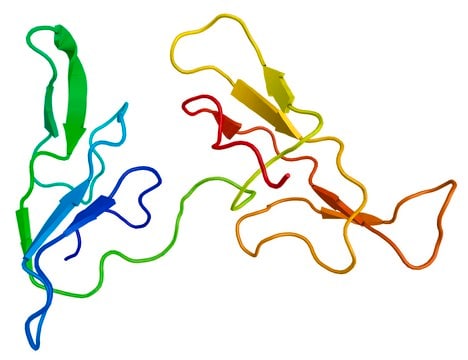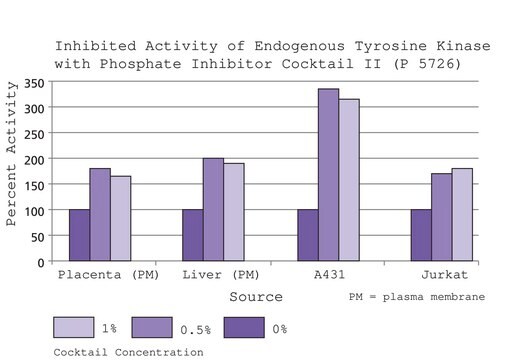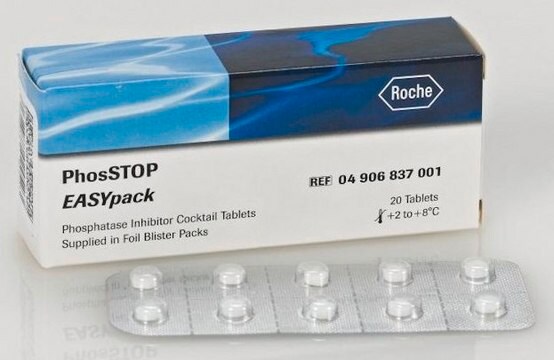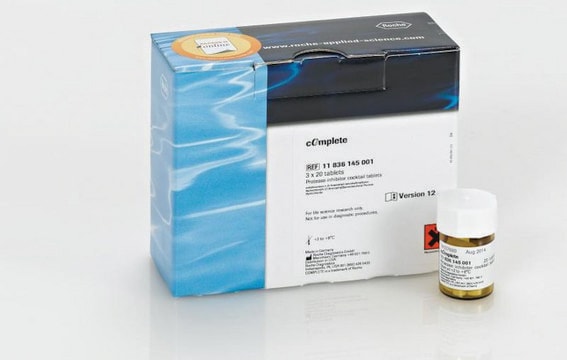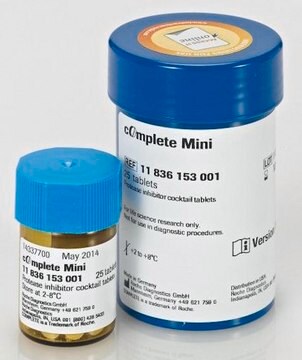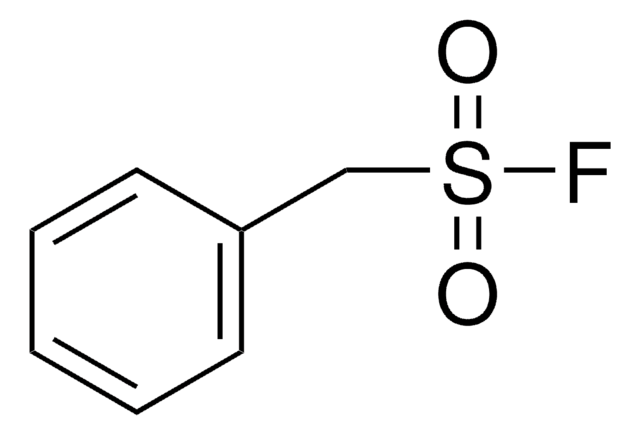Recommended Products
description
protease free
Quality Level
form
liquid
packaging
pkg of 50 mL
pkg of 500 mL
technique(s)
immunoprecipitation (IP): suitable
color
colorless
pH
7.8-8.2 (25 °C, 1 ×)
storage temp.
2-8°C
Looking for similar products? Visit Product Comparison Guide
Related Categories
General description
Application
- Fibroblast-based deep phenotyping of the peripheral tissue, which facilitates the mechanistic disease stratification in sporadic Parkinson′s disease (sPD).
- Demonstrating the inhibition of oxidative phosphorylation (OXPHOS), which can activate the mixed lineage kinase domain-like protein (MLKL)-dependent necroptosis in human lung epithelial cells.
Features and Benefits
Other Notes
Legal Information
also commonly purchased with this product
related product
Certificates of Analysis (COA)
Search for Certificates of Analysis (COA) by entering the products Lot/Batch Number. Lot and Batch Numbers can be found on a product’s label following the words ‘Lot’ or ‘Batch’.
Already Own This Product?
Documents related to the products that you have purchased in the past have been gathered in the Document Library for your convenience.
Difficulty Finding Your Product Or Lot/Batch Number?
How to Find the Product Number
Product numbers are combined with Pack Sizes/Quantity when displayed on the website (example: T1503-25G). Please make sure you enter ONLY the product number in the Product Number field (example: T1503).
Example:
Additional examples:
705578-5MG-PW
PL860-CGA/SHF-1EA
MMYOMAG-74K-13
1000309185
enter as 1.000309185)
Having trouble? Feel free to contact Technical Service for assistance.
How to Find a Lot/Batch Number for COA
Lot and Batch Numbers can be found on a product's label following the words 'Lot' or 'Batch'.
Aldrich Products
For a lot number such as TO09019TO, enter it as 09019TO (without the first two letters 'TO').
For a lot number with a filling-code such as 05427ES-021, enter it as 05427ES (without the filling-code '-021').
For a lot number with a filling-code such as STBB0728K9, enter it as STBB0728 without the filling-code 'K9'.
Not Finding What You Are Looking For?
In some cases, a COA may not be available online. If your search was unable to find the COA you can request one.
Which document(s) contains shelf-life or expiration date information for a given product?
If available for a given product, the recommended re-test date or the expiration date can be found on the Certificate of Analysis.
How do I get lot-specific information or a Certificate of Analysis?
The lot specific COA document can be found by entering the lot number above under the "Documents" section.
How do I find price and availability?
There are several ways to find pricing and availability for our products. Once you log onto our website, you will find the price and availability displayed on the product detail page. You can contact any of our Customer Sales and Service offices to receive a quote. USA customers: 1-800-325-3010 or view local office numbers.
What is the Department of Transportation shipping information for this product?
Transportation information can be found in Section 14 of the product's (M)SDS.To access the shipping information for this material, use the link on the product detail page for the product.
After preparing a lysate using Product R0278, RIPA Buffer, how should it be stored? And for how long can the lysate be stored?
Lysates containing the appropriate inhibitor(s) can be stored at -70°C for up to a year.
Can Product R0278, RIPA buffer, be used on tissue samples, or only on cultured cells?
R0278 can be used on tissue, if it is well homogenized.
Does Product R0278, RIPA buffer, contain any protease inhibitors or phosphatase inhibitors?
This buffer does not contain any protease or phosphatase inhibitors, however, they may be added to insure against possible proteolysis.
How does Product R0278, RIPA buffer, compare to Product No. C2978 (CelLytic M)?
RIPA buffer contains SDS, which is considered to be a harsh detergent; it can denature many proteins. C2978 is a buffered solution (pH 7.6) that contains a mild detergent; it is non-denaturing for most proteins. The exact formulation of C2978, however, is proprietary.
I left the bottle of Product R0278, RIPA buffer, on my bench for about a week. Can I still use it?
Yes, you should be able to use this product. Although we recommend storage in the refrigerator at 2-8°C for long-term storage, Product No. R0278 may be kept at ambient temperature (our normal shipping condition) for a short time (approximately 2 weeks).
My question is not addressed here, how can I contact Technical Service for assistance?
Ask a Scientist here.
Our team of scientists has experience in all areas of research including Life Science, Material Science, Chemical Synthesis, Chromatography, Analytical and many others.
Contact Technical Service

